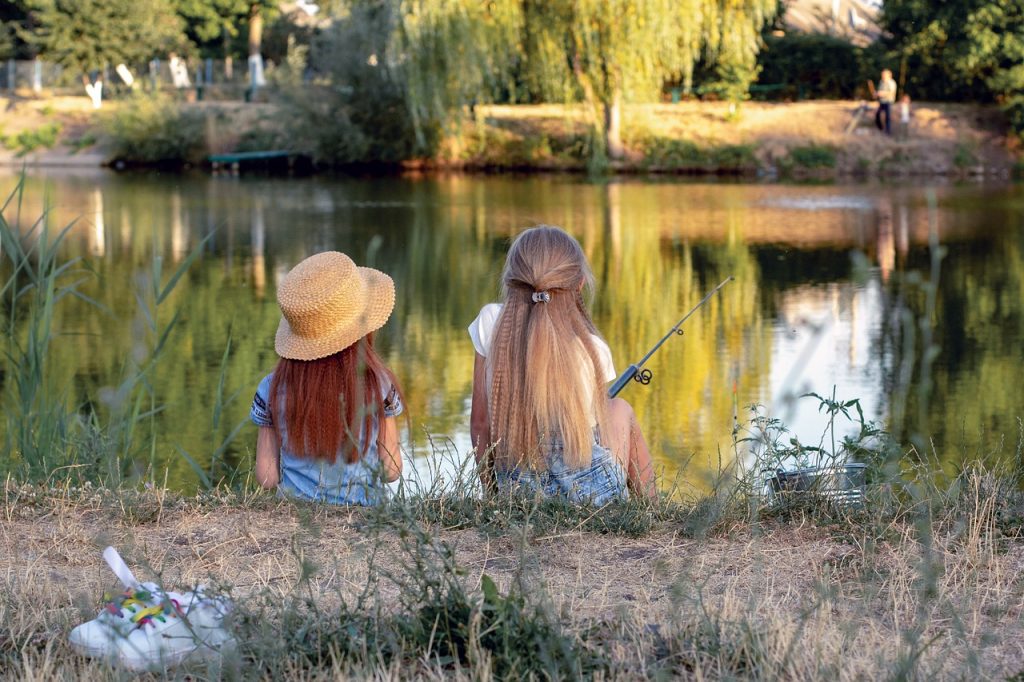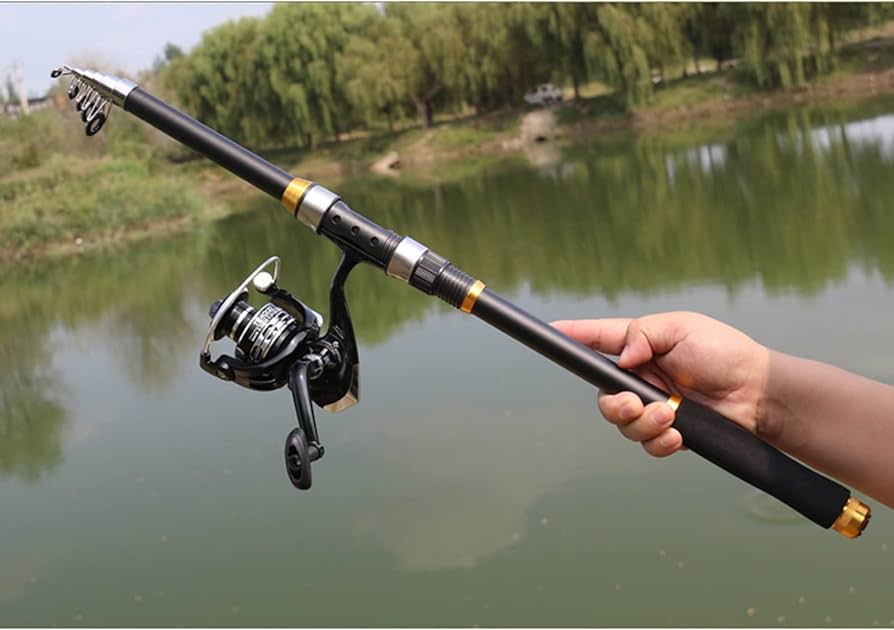Kayak Fishing Mistakes: 9 Blunders to Avoid for a Smooth Ride
.
(Photo from Kelsey Dody | unsplash.com)
Kayak fishing promises both adventure and tranquility. Transitioning from conventional angling methods, this niche activity combines the thrill of the catch with the serenity of nature. However, like any pursuit, mastering the nuances of kayak fishing demands diligence and knowledge. To truly relish this experience, enthusiasts must navigate through potential pitfalls and challenges. As the popularity of kayak fishing surges, ensuring a safe and rewarding outing becomes important. Through this comprehensive guide, we delve into the common mistakes many encounter and unveil strategies to sidestep them.
Neglecting Safety Precautions
Embarking on a kayak fishing expedition blends the thrill of angling with the serene backdrop of nature. However, amidst the excitement, it’s easy to inadvertently overlook vital safety precautions. Foremost among these is the insistence on wearing a life jacket. Regardless of one’s proficiency in swimming, the unpredictability of water bodies demands this non-negotiable safety measure.
Moreover, the nuances of each water body’s rules and regulations shouldn’t be underestimated. These guidelines, often crafted with both safety and environmental preservation in mind, offer invaluable insights. By meticulously familiarizing oneself with them, anglers not only uphold responsible fishing practices but also shield themselves from potential legal repercussions.
Furthermore, the essence of safety extends beyond mere equipment. Adopting the buddy system—wherein kayakers operate in pairs or groups—introduces an additional safety net. This collaborative approach ensures that assistance or guidance is always within reach, fostering a sense of community and mutual responsibility among participants. Additionally, maintaining a clear line of communication with someone ashore, detailing the intended route and expected return time, serves as a pivotal safety buffer. Embracing these safety-centric practices, combined with regular kayak upkeep, paves the way for an enriched, secure, and memorable kayak fishing journey.
(Photo from Alexander Zvir | pexels.com)
Ignoring Weather Conditions
The tranquility of dawn, with its gentle ripples and muted sun, often beckons kayak fishing enthusiasts. Yet, this serene ambiance can sometimes mask impending weather challenges. Indeed, underestimating the ever-changing moods of nature can transform what began as a peaceful kayak outing into a daunting venture.
A judicious approach begins with proactive weather assessments. It’s not merely about glancing at the skies; a comprehensive understanding demands attention to finer details. Beyond the binary of sunshine versus rain, one must delve into metrics like wind speed and wave height. These factors, though seemingly subtle, wield immense influence. For instance, what might seem like a mild breeze can escalate, churning the waters and testing even the most seasoned kayaker’s mettle.
Furthermore, foresight and adaptability become invaluable assets in such scenarios. It’s imperative to have contingency plans in place. Whether it’s scouting alternative fishing spots or swiftly navigating back to the safety of the shore, preparedness can make all the difference. In essence, while the allure of a serene morning is undeniable, prioritizing safety by respecting and understanding weather dynamics ensures that each kayak fishing expedition remains both thrilling and secure.
Choosing the Wrong Kayak
In the realm of kayak fishing, the vessel you choose becomes more than just a mode of transport—it’s your fishing platform, your sanctuary amidst the waters. Regrettably, many newcomers fall into the trap of selecting kayaks driven by superficial factors such as price tags or aesthetic appeal. Yet, the nuances between various kayak designs and functionalities can significantly impact your fishing journey.
It’s essential to recognize that not all kayaks are created equal. Each design resonates with specific fishing styles and preferences. For instance, the sprawling space and accessibility of sit-on-top kayaks make them ideal for anglers who prioritize maneuverability and casting ease. The openness facilitates swift movements, ensuring that every cast and reel aligns seamlessly with your intentions.
On the other hand, the snug confines of sit-inside kayaks offer a different set of advantages. They act as a shield against inclement weather, providing a sense of security and insulation against external elements. However, with the encapsulating design comes certain trade-offs in terms of storage and accessibility.
In conclusion, the quest for the perfect kayak demands introspection and foresight. Reflect on your fishing habits, the environments you frequent, and the equipment you intend to carry. By aligning these considerations with the kayak’s design and capabilities, you pave the way for a harmonious and fulfilling kayak fishing experience.
Overpacking and Overloading
The allure of kayak fishing often lies in its simplicity and connection to nature. However, the excitement of a fishing expedition can sometimes lead enthusiasts down the path of overindulgence. The temptation to bring along a plethora of gear, from specialized lures to backup reels, can inadvertently overshadow the importance of streamlined preparations.
Central to a successful kayak fishing venture is recognizing and respecting the vessel’s limitations. Every kayak is engineered with specific weight capacities in mind and meticulously calibrated to ensure optimal performance on the water. Overstepping these boundaries doesn’t just risk equipment damage; it poses genuine safety concerns, compromising the kayak’s stability and responsiveness.
Tips to not Overpack
To navigate this challenge, a methodical approach to packing becomes indispensable. Begin with a meticulous inventory of essentials: your trusted fishing rod, a well-stocked tackle box, and indispensable safety gear. Tailor your gear selection based on the expedition’s duration. For extended journeys, versatility becomes key. Opt for items that serve dual purposes, ensuring functionality without overwhelming your kayak’s capacity.
Moreover, how gear is stowed plays a pivotal role in maintaining equilibrium. Distribute weight strategically, positioning heavier items closer to the kayak’s center of gravity. This practice not only safeguards against potential capsizing but also ensures that your kayak retains its agility and maneuverability. In essence, while the thrill of preparation is undeniable, striking a balance between necessity and excess is paramount for an enriching kayak fishing experience.
Neglecting to Learn Basic Paddling Techniques
(Photo from Harrison Fitts | pexels.com)
The rhythmic dance of the paddle against water, and the gentle glide of the kayak—are the foundational elements that set the stage for a seamless kayak fishing experience. Yet, in the fervor of chasing the perfect catch, the essence of proficient paddling often remains overshadowed. A harmonious blend of fishing prowess and paddling finesse is crucial for navigating the waters with grace and efficiency.
At the heart of this synergy lie the foundational paddling techniques. These aren’t mere rudimentary motions but intricate maneuvers that dictate your kayak’s trajectory and pace. Delve into the basics: the propulsive force of the forward stroke, the braking mechanism of the reverse, the sweeping arcs of the sweep, and the precise adjustments of the draw. Mastery over these strokes not only ensures directional control but also conserves energy, enabling longer, more productive fishing sessions.
However, theory alone isn’t sufficient. The waters demand hands-on experience, a tangible connection where theory meets practice. Begin your paddling odyssey in serene waters, where the gentle ripples serve as forgiving tutors. Gradually, as confidence builds, challenge yourself with varying conditions, acquainting yourself with the intricacies of wind patterns and currents. This intimate understanding fosters a symbiotic relationship with nature, where you become one with the elements, harnessing their energies to enhance your kayak fishing prowess.
Lack of Proper Maintenance
Maintenance safeguards both your kayak’s longevity and your safety. Regular upkeep prevents unexpected equipment failures mid-trip. Post-adventure, a thorough freshwater rinse prevents salt buildup, which can corrode materials over time. Always scan for wear indicators like fissures or indentations; swift repairs circumvent larger issues. Shielding your kayak from direct sunlight deters UV-induced degradation, preserving its structural integrity. Routinely inspect and refresh components, like rudders or hatches, to ensure they’re in optimal working condition.
Disregarding Local Fishing Regulations
Navigating regional fishing rules is paramount for kayak anglers. Each locale tailors regulations to conserve aquatic ecosystems and species diversity. Merely pleading ignorance won’t absolve infringements, leading to potential legal repercussions. Familiarize yourself with the specifics: permissible species, catch sizes, and conservation directives. Secure any mandated licenses or permits in advance; it’s a foundational step. When in doubt, consult with seasoned local fishermen or authorities. Adhering to these guidelines not only promotes ecological balance but also nurtures community trust and camaraderie among anglers.
Not Investing in Quality Fishing Gear
While it might be tempting to opt for budget-friendly options, investing in quality kayak fishing gear is crucial for a successful experience. High-quality rods, reels, and tackle can enhance your fishing efficiency and increase your chances of landing a catch. Prioritize durability and functionality when selecting gear. Consider factors such as rod strength, reel smoothness, and tackle versatility. Additionally, ensure your gear is suited for kayak fishing, with features such as compact design and corrosion-resistant materials. Quality gear not only improves your fishing experience but also offers better value in the long run.
Overlooking Personal Comfort
Comfort plays a significant role in enjoying your kayak fishing outings. Many enthusiasts prioritize fishing gear and overlook personal comfort, leading to fatigue and reduced enjoyment. Invest in a comfortable kayak seat with adequate back support. Consider adding padding or cushions for additional comfort during extended trips. Wear appropriate clothing suited for the prevailing weather conditions, ensuring you’re both protected and comfortable. Additionally, stay hydrated and take regular breaks to stretch and relax. Prioritizing personal comfort enhances your overall experience and allows you to fully immerse yourself in the tranquility of kayak fishing.
In Conclusion
Kayak fishing is more than just a sport; it’s a harmonious dance with nature. While it promises exhilarating moments, it demands respect and preparedness. Steering clear of prevalent errors amplifies the joys and minimizes pitfalls. Prioritizing safety isn’t just a mantra; it’s a lifeline ensuring every trip remains memorable for the right reasons. Moreover, the essence lies not just in the journey but in the gear that accompanies it. Quality equipment isn’t a luxury but a necessity, elevating every cast and reel.
Furthermore, knowledge isn’t static; it evolves with each trip and experience. Continuously updating oneself with the nuances of kayak fishing enriches the adventure. Engage with fellow enthusiasts, join forums, attend workshops, and immerse in the community’s collective wisdom.
Lastly, as with any pursuit, the heart of kayak fishing beats with preparation. From meticulously planning routes to understanding weather patterns, every detail counts. Embrace each outing with an open heart and a curious mind. After all, in the vast expanse of waters, it’s not just about the fish you catch but the stories you gather and the memories etched along the way.
FAQs on Kayak Fishing: Common Mistakes and Tips
1. Why is safety emphasized so much in kayak fishing?
Safety is paramount in kayak fishing due to the inherent risks associated with being on water. Kayaks are smaller vessels, and understanding safety protocols ensures that anglers can enjoy their experience without undue risks.
2. How can I determine if my kayak is suitable for fishing?
A fishing-specific kayak often has features like rod holders, ample storage, stability, and is generally wider for better balance. Consider your fishing needs and match them to a kayak’s specifications.
3. Are there specific licenses required for kayak fishing?
Licensing requirements vary by region. Always check with local authorities about necessary permits or licenses before embarking on a fishing trip.
4. How do I maintain my kayak’s lifespan?
Regular maintenance, such as rinsing after use, storing away from direct sunlight, and checking for wear or damage, can significantly extend the lifespan of your kayak.
5. Why is it essential to respect local fishing regulations?
Local fishing regulations are in place to ensure sustainability and protect fish populations. Adhering to these rules ensures that fishing remains sustainable.
Read our latest blog on Kayak Fishing for Beginners: Hook Your First Fish This Weekend!


